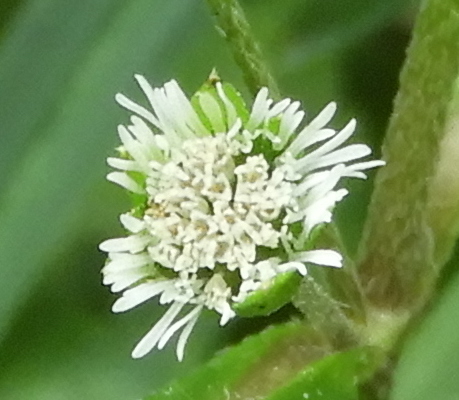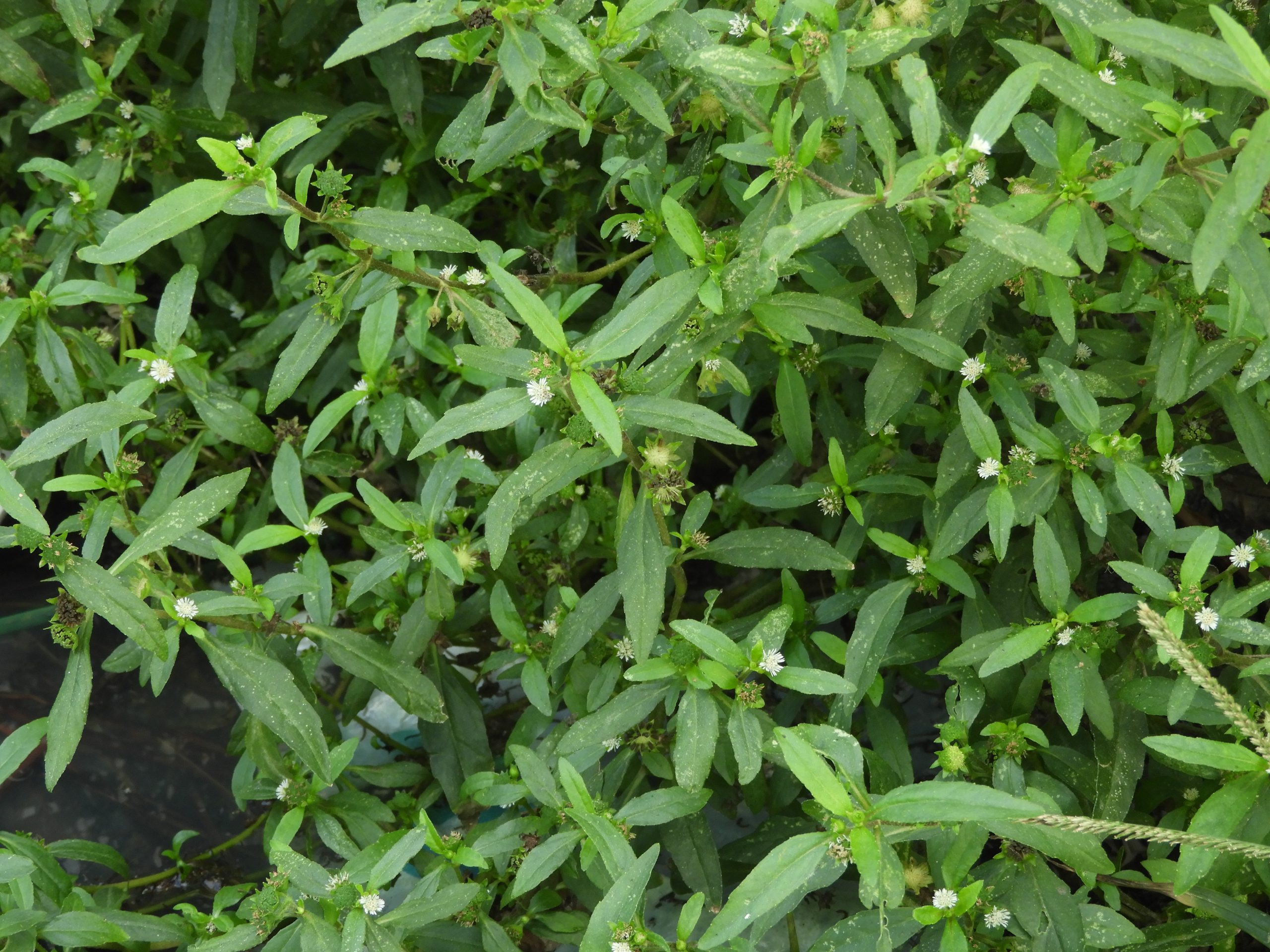Habit: Eclipta prostrata is an annual or short-lived perennial to 90 cm in height when flowering, slightly pubescent, and forming large mats. The simple leaves arranged oppositely, to 12 cm in length, lanceolate/linear/elliptic, with a slightly dentate leaf margin and an acute leaf apex.
The flowers are arranged in heads. The heads are subtended by a series of pubescent involucral bracts. The calyx is modified as a ring of hairs (pappus). There are both perfect and imperfect (carpellate) flowers in the heads. The perfect (disc) flowers are in the center and the imperfect (ray) flowers are arranged around the edge of the heads. Each flower is subtended by bracts.
The imperfect flowers have 3 (fused into 1) white, notched tipped, petals and no stamens. The perfect flowers have a corolla with 5 fused, brown petals. There are 4 stamens fused at their base. In both types of flowers, the ovary is inferior with a single locule but only the perfect flowers have functional ovules. The fruit is a pubescent achene at maturity that retains the modified calyx (pappus) as lobed projections.
Habitat: Eclipta prostrata grows in and around low lying fresh water wet areas.
Distribution: Eclipta prostrata occurs throughout the Lucayan Archipelago as well as the Caribbean region, and North, Central and South America. It now occurs throughout the world as weed.
Medicinal/Cultural/Economic usage: Eclipta prostrata is not known to be used medicinally in the Lucayan Archipelago.


